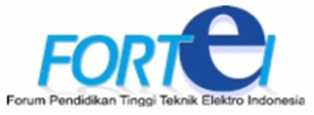Pemantauan Suhu dan Deteksi Gerak Obyek Berbasis IoT pada Ruang Server Menggunakan Thinger.IO
Sari
Server memiliki peran vital dalam kelangsungan bisnis. Oleh karena itu, parameter ruang server seperti suhu dan kelembapan penting untuk dipantau untuk kepentingan pemeliharaan. Berbeda dengan penelitan sejenis terdahulu, penelitian ini bertujuan merancang sistem pemantauan suhu dan kelembapan, serta deteksi gerak objek pada ruang server secara real-time dengan memanfaatkan aplikasi Thinger.io. Metode perancangan perangkat pemantauan ruang server dibangun dari satu microcontroler, satu sensor suhu dan kelembapan, serta sensor gerakan obyek dan kamera. Luaran dari sensor diproses oleh Node MCU sebelum dikirim ke internet menggunakan Thinger.io. Selanjutnya, data hasil pemantauan tersebut ditampilkan di browser dan smartphone. Hasil pengujian menunjukkan bahwa perangkat pemantauan yang telah dirancang memiliki kinerja yang baik. Pembacaan suhu yang dikirimkan Thinger.io ke internet melalui browser dan smartphone memiliki selisih 0,39°C. Sementara pengiriman notifikasi peringatan suhu di luar standar berhasil dikirimkan via email dan pesan telegram. Pengiriman notifikasi adanya gerakan objek juga berhasil dikirimkan via email serta pengiriman foto objek terdeteksi melalui telegram bot. Waktu pengiriman notifikasi adalah 13 detik untuk email dan 23 detik untuk telegram bot.
The server has a vital role in business continuity. Therefore, server room parameters such as temperature and humidity are important to monitor for maintenance purposes. In different to previous similar research, this study aims to design a temperature and humidity monitoring system and detect object motion in the server room in real-time using Thinger, io application. The design method of the server room monitoring device is built from a microcontroller, a temperature and humidity sensor, an object movement sensor, and a camera. The output of the sensor is processed by the Node MCU before being sent to the internet by using Tinger.io. Furthermore, the monitoring data is displayed in browsers and smartphones. The implementation results show that the device that has been designed has good performance. The temperature measurement that Thinger.io sends to the internet via a browser and then smartphone has a difference of 0,39°C. Meanwhile, the sending of temperature warning notification outside of the standard was successfully sent via email and telegram massage. Notification of objects was also successfully sent via email and photos of detected objects were sent via telegram bot. Notification delivery time takes13 seconds for email and takes 23 seconds for telegram bot.
Kata Kunci
Teks Lengkap:
PDFDilihat:
Referensi
M. O. Onibonoje, P. N. Bokoro, N. I. Nwulu, and S. L. Gbadamosi, “An IoT-Based Approach to Real-Time Conditioning and Control in a Server Room,” 2019 International Artificial Intelligence and Data Processing Symposium (IDAP), 2019, pp. 1–6, 2019, doi: 10.1109/IDAP.2019.8875880.
M. H. Zohari, V. Bala, A. Syamimi, and A. Ghafar, “Server monitoring based on IoT using ThingSpeak,” Journal of Electrical Power and Electronic System, vol. 1, no. 2, pp. 1–4, 2019.
T. Wellem and B. Setiawan, “A Microcontroller-based Room Temperature Monitoring System,” International Journal of Computer Applications, vol. 53, no. 1, pp. 7–10, 2012, doi: 10.5120/8383-1984.
N. M. S. Hassan, M. M. K. Khan, and M. G. Rasul, “Temperature monitoring and CFD analysis of data centre,” Procedia Engineering, vol. 56, pp. 551–559, 2013, doi: 10.1016/j.proeng.2013.03.159.
M. Ridwan, D. Djamaludin, and M. Roqib, “Prototype Monitoring Temperature and Humidity Sensor Room Server-Based Internet of Things (IOT),” International Conference of Science, Engineering and Technology, 2020, doi: 10.4108/eai.23-11-2019.2301576.
T. H. Nasution, M. A. Muchtar, S. Seniman, and I. Siregar, “Monitoring temperature and humidity of server room using Lattepanda and ThingSpeak,” Journal of Physics Conference Series, vol. 1235, no. 1, 2019, doi: 10.1088/1742-6596/1235/1/012068.
M. Alvan Prastoyo Utomo, A. Aziz, Winarno, and B. Harjito, “Server Room Temperature & Humidity Monitoring Based on Internet of Thing (IoT),” Journal of Physics Conference Series, vol. 1306, no. 1, 2019, doi: 10.1088/1742-6596/1306/1/012030.
F. H. Purwanto, E. Utami, and E. Pramono, “Implementation and Optimization of Server Room Temperature and Humidity Control System using Fuzzy Logic Based on Microcontroller,” Journal of Physics Conference Series, vol. 1140, no. 1, 2018, doi: 10.1088/1742-6596/1140/1/012050.
A. N. Yumang, C. C. Paglinawan, M. M. Sejera, A. S. Lazam, J. C. Pagtakhan, and J. S. B. Santos, “ZigBee Based Monitoring of Temperature and Humidity of Server Rooms using Thermal Imaging,” 6th IEEE International Conference of Control System , Computing and Engineering. (ICCSCE), 2016, pp. 452–454, 2016, doi: 10.1109/ICCSCE.2016.7893616.
R. Wijaya, V. Christian, Y. S. Yuwananda, and I. Alexander, “Temperature and humidity monitoring system in server room using raspberry Pi,” International Journal of Scientific & Technology Research, vol. 8, no. 10, pp. 3075–3078, 2019.
D. E. Kurniawan, M. Iqbal, J. Friadi, R. I. Borman, and R. Rinaldi, “Smart Monitoring Temperature and Humidity of the Room Server Using Raspberry Pi and Whatsapp Notifications,” Journal of Physics Conference Series, vol. 1351, no. 1, 2019, doi: 10.1088/1742-6596/1351/1/012006.
L. Shkurti, X. Bajrami, E. Canhasi, B. Limani, S. Krrabaj, and A. Hulaj, "Development of ambient environmental monitoring system through wireless sensor network (WSN) using NodeMCU and WSN monitoring," 6th Mediterranian Conference on Embedded Computing (MECO), pp. 11–15, 2017, doi: 10.1109/MECO.2017.7977235.
A. L. Bustamante, M. A. Patricio, and J. M. Molina, “Thinger.io: An open source platform for deploying data fusion applications in IoT environments,” Sensors (Switzerland), vol. 19, no. 5, 2019, doi: 10.3390/s19051044.
L. O. Aghenta and M. T. Iqbal, “Low-cost, open source IoT-based SCADA system design using thinger.IO and ESP32 thing,” Electron, vol. 8, no. 8, pp. 1–24, 2019, doi: 10.3390/electronics8080822.
DOI: https://doi.org/10.15575/telka.v8n1.74-81
Refbacks
- Saat ini tidak ada refbacks.
Jurnal TELKA terindex oleh :







Didukung oleh :


Ciptaan disebarluaskan di bawah Lisensi Creative Commons Atribusi-NonKomersial-BerbagiSerupa 4.0 Internasional.



